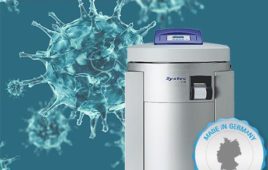Manufacturers and distributors of counterfeit medicines are becoming more sophisticated in terms of their ability to enter the legitimate pharmaceutical supply chain. In 2011 the European Council amended Directive 2001/83/EC to define the rules for manufacturing, importing, placing on the market, the wholesale distribution of medicinal products in the Union, as well as rules relating to active substances, by issuing the European Union’s (EU) Falsified Medicines (FMD) Directive 2011/62/EU.
This new Directive is intended to safeguard public health by protecting the pharmaceutical supply chain from infiltration by falsified (or counterfeit) medicines. It also introduces new rules to more rigorously regulate the supply chain. The European Commission Delegated Regulation, (EU) 2016/161, supplements the Directive 2001/83/EC with detailed rules regarding safety features for the packaging of medicinal products for human use. The regulation was adopted in October 2015 and becomes enforceable February 2019. It will apply to all 28 member countries of the EU, but the Directive allows each country to determine the measures they will take to ensure compliance.
Enhanced measures
This new Directive emphasizes three major components to ensure that the primary elements of the supply chain will be able to verify the authenticity of the product throughout the supply chain up until dispensing to the patient: UTI and Tamper Evident Device, Verification Model, and Distributor Level Verification.
UTI and Tamper Evident Device
The unique identifier (UI) must be encoded in a two-dimensional barcode and contain a product code and unique serial number. The U.S. FDA has assigned a similar legislation for serialization as part of the Drug Quality Security Act (DQSA).
The UI must include the following information:
1. Product code
2. Randomized serial number
3. Expiration date
4. Batch or lot number
5. National Health Reimbursement Number*
* Country-dependent
The guidance does not provide a great deal of detail regarding the requirements for the tamper-evident device other than to describe that it should indicate whether the package has been tampered with. Best-in-class considerations can be found within the European standard CEN-EN 16679: Packaging Tamper Evident Features for Medicinal Product Packaging.
While these two requirements may seem straightforward, deploying a UI scheme across the supply chain is quite complex. U.S. manufacturers and distributors have been actively working on implementation of a similar scheme since the DQSA was ratified in 2010. The non-harmonized aspect of the serialization scheme in the EU adds significant complexity as it is likely country-specific packaging will be required.
Verification Model
The verification model requires the manufacturer to print the UI on each unit of sale package and then upload the UI to a designated European repository at one end of the supply chain. The pharmacist, prior to dispensing, is then responsible for verifying the UI and the tamper evidence device against the European repository’s database. If the UI is found to be verified correctly, it is then dispensed and flagged as dispensed in the repository.
The repository is part of a collection of national repositories called the National Medicine Verification Systems (NMVS) which when connected together will constitute the centralized European Medicine Verification System (EMVS). Connections to the EMVS are managed by the European Medicines Verification Organization (EMVO). Manufacturers may upload data to the central EMVS when each unit of sale is released for sale. The EMVS will then distribute the UI to the appropriate NMVSs. When dispensed, the pharmacy system will then verify the UI against the NMVS.
Marketing Authorization Holders (MAHs) will need to develop their connection to the EMVO, and register with the relevant National Medicines Verification Organizations (NMVO). All MAHs should have registered with the NMVO in time to enable testing of the system and upload data to EMVS prior to February 2019.
Distributor Level Verification Solutions
At the distributor level, individual units of sale and their corresponding unique identifier will need to ensure that these two numbers are linked if they are to be able to take advantage of data aggregation. This approach allows each individual shipper UI to be linked to each individual UI within the shipper.
The impending FMD is an affirmation of the commitment by the EU to address the escalating problem of counterfeit drugs. Their vision for end-to-end verification of the physical supply chain culminating with the dispensing of the medication to the patient is ambitious and is something no other country has been able to establish to date. The country-specific nature of the adoption of the directive will definitely add complexity to establishing a fully compliant system for each participant in the supply chain. Given that complexity, firms looking to manufacture and distribute drugs within the EU should, by now, be well on their way to implementation if they hope to comply with the specific requirements for this Directive by February 2019.
Bikash Chatterjee is President and Chief Science Officer of Pharmatech Associates, a Hayward, Calif.-based company that provides consulting and services to the regulated life science industry. Bikash has been involved in the biopharmaceutical, pharmaceutical, medical device, and diagnostics industry for over 30 years. His expertise includes site selection, project management, design, and validation of facilities for U.S. and European regulatory requirements. [email protected]



